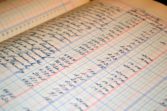Day trading, a popular form of speculative trading in financial markets, has gained significant attention in recent years

This article aims to provide a comprehensive overview of day trading, including what it is, the different types of day traders, popular strategies, and quantitative measurements associated with this practice. We will also discuss how day traders differ from one another, examine the historical pros and cons of various day trading approaches, and explore the potential benefits and drawbacks of engaging in this form of trading.
1. Introduction
Day trading involves the buying and selling of financial instruments within the same trading day, usually with the goal of profiting from short-term price fluctuations. Unlike long-term investing, which focuses on holding assets for extended periods, day traders aim to take advantage of intraday price movements. This fast-paced trading style requires quick decision-making skills, knowledge of technical analysis, and access to real-time market data.
2. Types of Day Traders

There are different types of day traders, each with varying strategies and goals. Some popular types include:
– Scalpers: These traders aim to make numerous small profits by capitalizing on slight price movements within seconds or minutes.
– Momentum Traders: This type focuses on identifying stocks or other assets with significant momentum, hoping to ride the trend and generate profits.
– Technical Traders: Technical analysis plays a crucial role for these traders as they analyze charts, patterns, and indicators to make trading decisions.
– News Traders: News and events have a significant impact on financial markets. News traders aim to capitalize on market reactions to important announcements or economic data releases.
3. Quantitative Measurements
When it comes to day trading, various quantitative measurements can help assess performance and risk. Some key metrics include:
– Average Daily Trading Volume: This metric reflects the number of shares traded in a specific stock on a daily basis. High volume stocks are often favored by day traders due to increased liquidity.
– Average True Range (ATR): ATR indicates the average price range of an asset during a specific period. Day traders may use this measurement to assess potential profits and set stop-loss orders.
– Sharpe Ratio: This ratio measures the risk-adjusted return of an investment. It can be used to evaluate the performance of a day trader’s portfolio.
4. Differences Among Day Traders
Day traders can differ in various aspects, including their risk tolerance, preferred trading instruments, and timeframes. Some may focus solely on stocks, while others trade derivatives like options or futures. Additionally, day traders may have different timeframes, with some holding positions for only a few minutes, while others retain their positions for several hours.
5. Historical Pros and Cons
Day trading has both advantages and disadvantages. Some potential advantages include:
– Potential for high returns: Due to the frequency of trades, successful day traders can generate substantial profits.
– Independence and flexibility: Day traders have the freedom to work from anywhere and create their own schedules.
– No overnight risk: Day traders close their positions by the end of the trading day, mitigating the risks associated with overnight market movements.
However, there are also drawbacks to day trading, such as:
– High risk: Day trading involves significant risk as market movements can be unpredictable and result in losses.
– Emotional stress: The fast-paced nature of day trading can lead to emotional decision-making, which may negatively impact trading outcomes.
– High transaction costs: Frequent trading can result in substantial transaction fees, impacting overall profitability.
[INSERT VIDEO HERE]
In conclusion, day trading is a dynamic and challenging form of trading that requires extensive knowledge, discipline, and the ability to adapt to changing market conditions. While it offers the potential for significant profits, the risks involved should not be overlooked. Understanding different types of day traders, quantitative measurements, and the historical pros and cons can help individuals make informed decisions before engaging in day trading.
FAQ
What are some pros and cons of day trading?
What are the different types of day traders?
What is day trading?
Fler nyheter
Sälja guld i Östersund: Guide till pris, process och trygghet
This article aims to provide a comprehensive overview of day trading, including what it is, the different types of day traders, popular strategies, and quantitative measurements associated with this practice. We will also discuss how day traders diff...
03 december 2025
Sälja guld i Malmö: Vad du behöver veta
This article aims to provide a comprehensive overview of day trading, including what it is, the different types of day traders, popular strategies, and quantitative measurements associated with this practice. We will also discuss how day traders diff...
30 november 2025
Visuell marknadsföring: Exempel på effektiva bildkampanjer
This article aims to provide a comprehensive overview of day trading, including what it is, the different types of day traders, popular strategies, and quantitative measurements associated with this practice. We will also discuss how day traders diff...
19 november 2025
Så påverkar 5G företagens möjligheter att växa
This article aims to provide a comprehensive overview of day trading, including what it is, the different types of day traders, popular strategies, and quantitative measurements associated with this practice. We will also discuss how day traders diff...
16 november 2025











